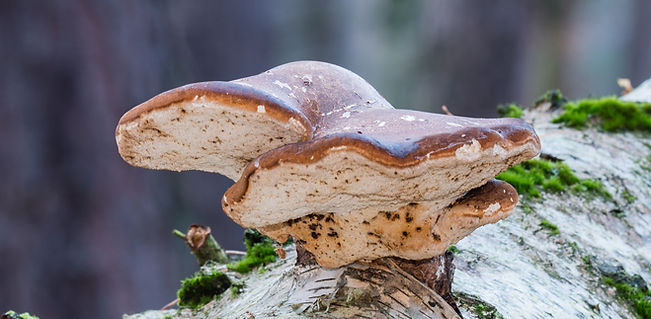.png)
#6
Birch Polypore
Fomitopsis betulina (formerly known as Piptoporus betulinus) is more commonly known as the Birch Polypore or Razor Strop Fungus. It is is a bracket fungus that primarily grows on birch trees. Characterized by its hoof-like appearance, this fungus has a smooth, creamy to pale brown upper surface and a white to pale brown porous underside. The fruiting bodies are perennial and can range from 5 to 20 cm in width. Its texture is tough and leathery when fresh but becomes brittle upon drying.
This fungus plays a significant role in the decomposition of dead birch trees, aiding in nutrient recycling within forest ecosystems. It is a saprophytic fungus, meaning it feeds on dead organic matter, particularly wood. F. betulina can cause a brown rot, breaking down cellulose and leaving behind the lignin, which contributes to the structural degradation of the host tree.
Microscopically, it features cylindrical spores and a monomitic hyphal system, meaning its fruiting body consists solely of generative hyphae. The spores are released through the pores on the underside of the bracket, spreading to new locations to continue the life cycle.

Image: Norbert Nagel , Wikimedia Commons, License: CC BY-SA 3.0
Three interesting facts -
Ancient Medicinal Use: Fomitopsis betulina was found with Ötzi the Iceman, a 5,300-year-old mummy, suggesting its use as a natural antibiotic and antiparasitic agent in ancient times.
Razor Strop Fungus: Its tough, leather-like surface was traditionally used to sharpen razors, hence the common name Razor Strop Fungus.
Potential in Modern Medicine: Recent studies indicate that extracts from Fomitopsis betulina have antimicrobial properties, offering potential for developing new antibiotics.